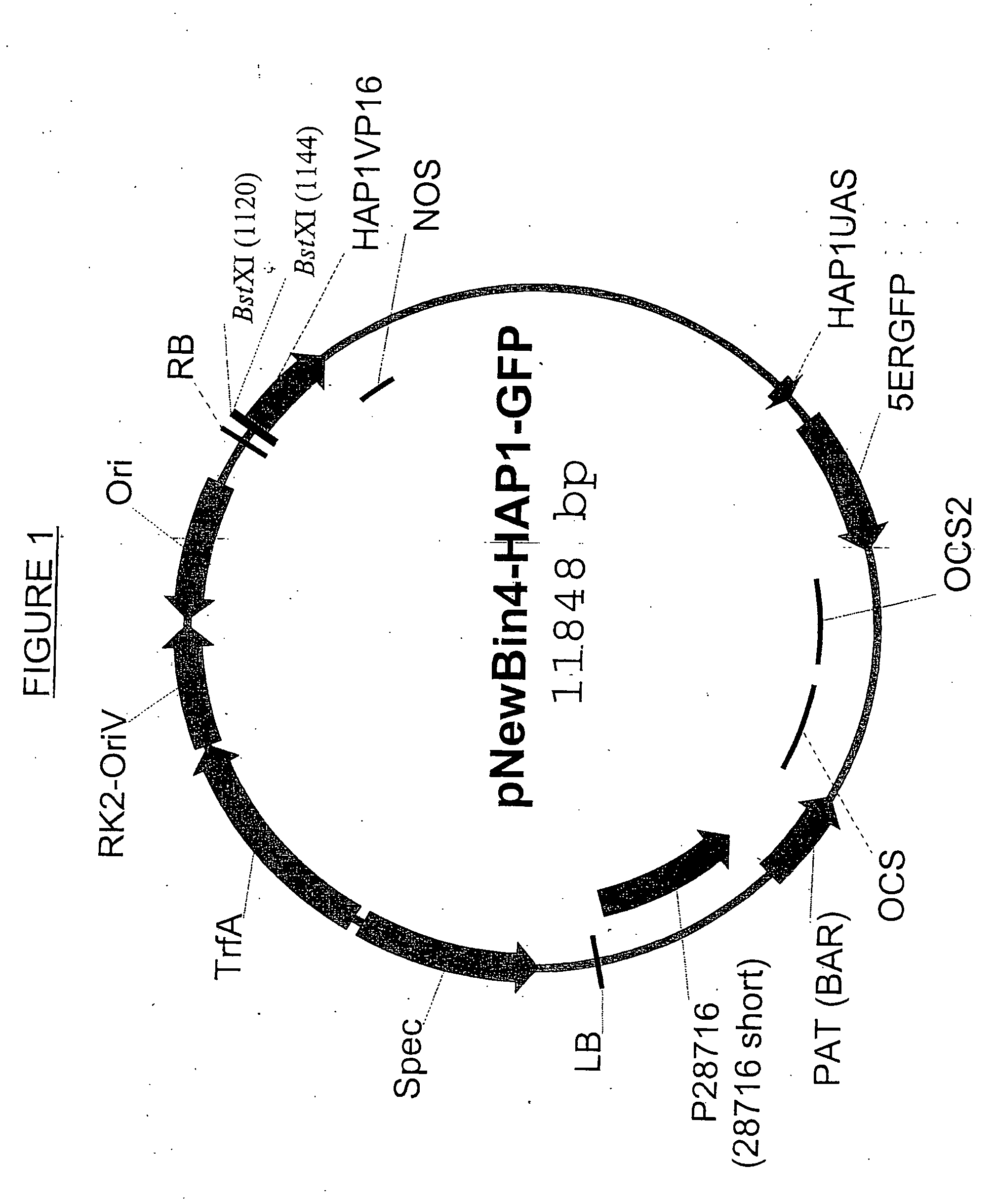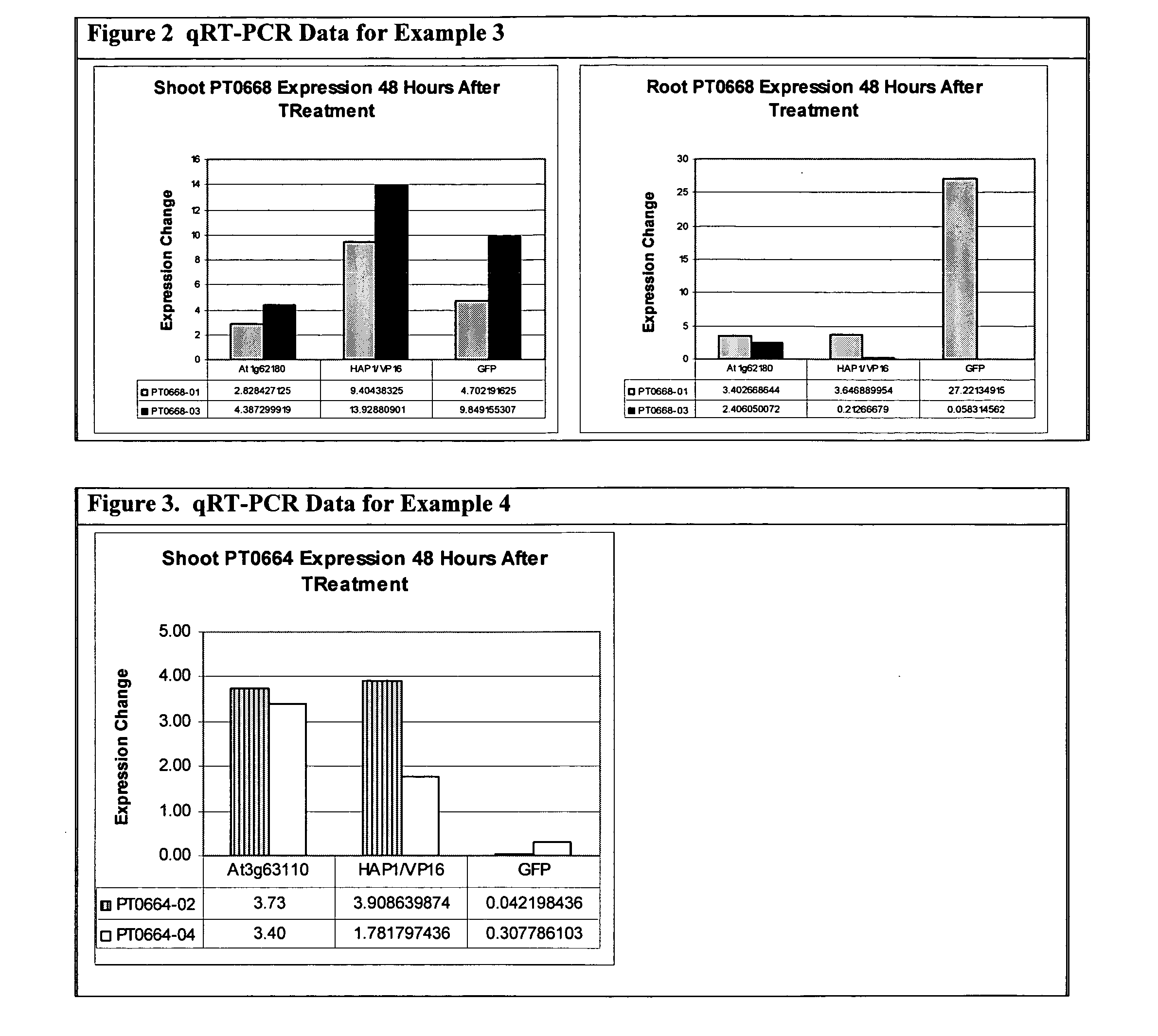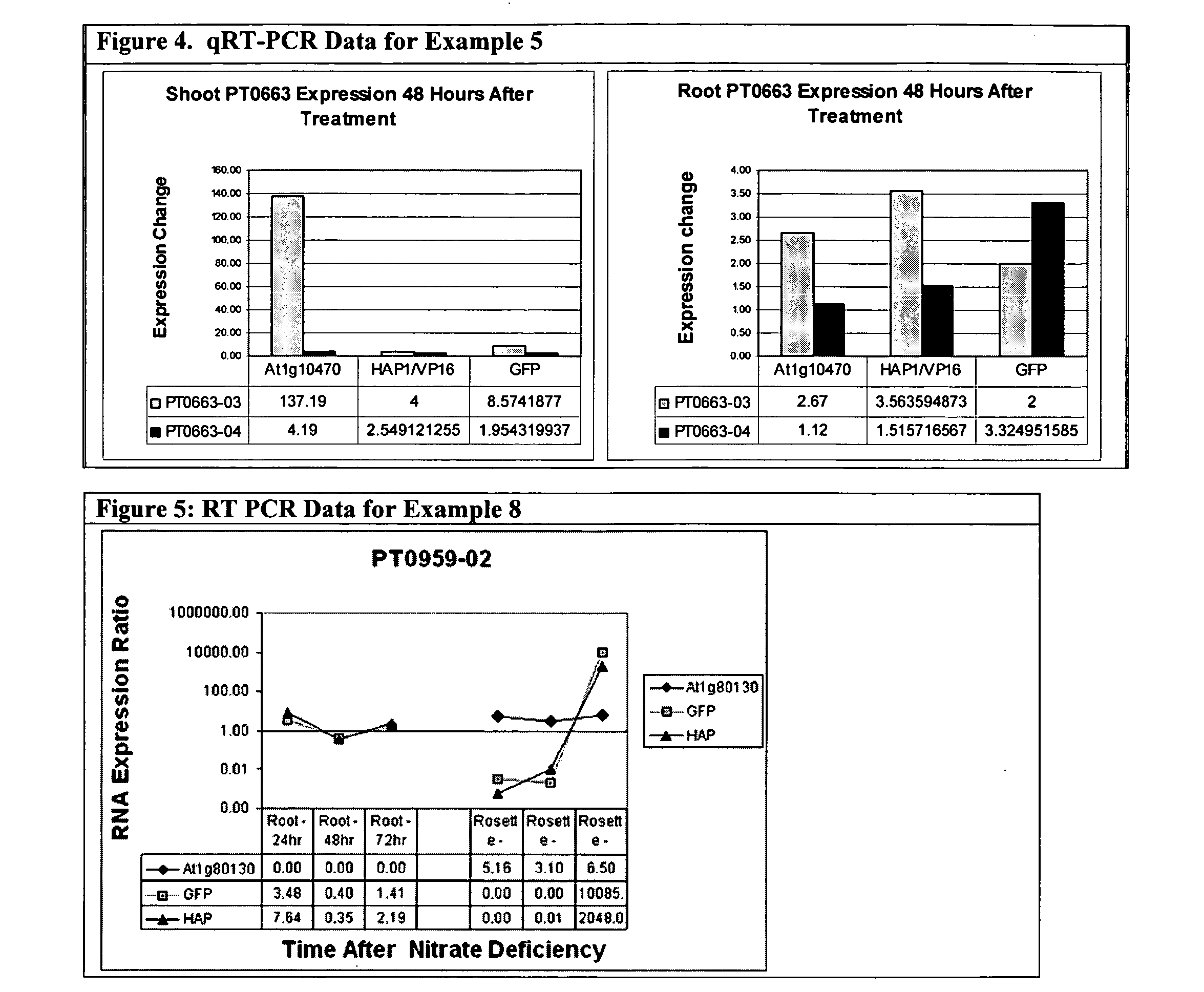Promoter, promoter control elements, and combinations, and uses thereof
a technology of promoters and control elements, applied in the field of nitrogen responsive promoters and promoter control elements, can solve the problems of nitrogen being the most frequently the rate-limiting mineral nutrient, and many complex interactions are still unknown, so as to reduce the amount and/or frequency of fertilizer application and improve the characteristics of the progenitor plant
- Summary
- Abstract
- Description
- Claims
- Application Information
AI Technical Summary
Benefits of technology
Problems solved by technology
Method used
Image
Examples
example 1
[0290]
Promoter Expression Report #166.PT0625.FPNUEPromoter Tested In: Arabidopsis thaliana, Wassilewskija (WS) ecotypeSpatial expression summary:Primary RootH epidermisObserved expression pattern:T1 mature: No expressionT2 seedling: Root specific GFP expression. High expression in root epidermal cells.Expected expression pattern:Shoots, Roots - Nitrogen inducibleSelection Criteria:MicroarrayGene: Arabidopsis thaliana LOB domain protein 38GenBank: NM_114854 Arabidopsis thaliana LOB domain protein 38 / lateral organ boundariesdomain protein 38 (LBD38) (At3g49940) mRNA, complete cds gi|18408982|ref|NM_114854.1Source Promoter Organism:Arabidopsis thaliana, Columbia (Col) ecotypeVector:pNewbin4-HAP1-GFPMarker Type:GFP-ERGeneration Screened: XT1 Mature XT2 Seedling T2 Mature T3 SeedlingInductions completed.TimeEvents Screened / Treatment:Age:Gen:points:ResponseResponse:1. Minus N to 60 mM12 d.T2 2 Hr3 / 3LowN (MS) 6 Hr3 / 0No2. 100 μM KNO3 to12 d.T224 Hr3 / 0No60 mM KNO348 Hr3 / 0NoInducible expr...
example 2
[0292]
Promoter Expression Report #169.PT0669.FPNUEPromoter Tested In: Arabidopsis thaliana, Wassilewskija (WS) ecotypeSpatial expression summary:Flower H nectarySiliqueH stomataOvulePost-fertilization: H early endosperm H embryoEmbryoH radicle H cotyledons H matureRosette LeafH petiolePrimary RootH epidermis H cortex H endodermis H vascular H pericycle H root capL root hairsLateral rootH epidermis H cortex H endodermis H initials H primordia H vascularH lateral root capObserved expression pattern:T1 Mature expression: GFP is highly expressed throughout the female gametophyte, earlyendosperm and mature embryos. GFP is also expressed in nectarines of developing flowers,pollen, and guard cells in some siliques.T2 Seedling expression: GFP is highly expressed throughout roots of seedlings. GFP alsoexpressed in petioles of emerging rosette leaves.Expected expression pattern:Shoots, Roots - Nitrogen inducibleSelection Criteria:MicroarrayGene:Arabidopsis thaliana ferredoxin, putativeGenBan...
example 3
[0294]
Promoter Expression Report #170.PT0668.FPNUEPromoter Tested In: Arabidopsis thaliana, Wassilewskija (WS) ecotypeSpatial expression summary:FlowerH filamentSiliqueH vascular H ovuleOvulePre-fertilization: H outer integument H chalazaPost-fertilization: H outer integument H chalazaHypocotylL epidermis H vascularRosette LeafH epidermisObserved expression pattern:T1 Mature expression: GFP is preferentially expressed in chalazal region of the outerintegument in developing ovules and seed coats. In flowers, GFP is also expressed in vasculatureof carpels and connective region of anther filament. GFP is highly expressed in mesophyll andvasculature of leaves with weak expression in epidermal cells. Not expressed in cells of the stem.T2 Seedling expression: GFP is highly expressed in epidermis and cortex cells of root, vascularcells of the hypocotyl and in the epidermis of leaves.Expected expression pattern:Shoots, Roots - Nitrogen inducibleSelection Criteria:MicroarrayGene: 5′-adenylyl...
PUM
| Property | Measurement | Unit |
|---|---|---|
| Tm | aaaaa | aaaaa |
| depth | aaaaa | aaaaa |
| Tm | aaaaa | aaaaa |
Abstract
Description
Claims
Application Information
 Login to View More
Login to View More - R&D
- Intellectual Property
- Life Sciences
- Materials
- Tech Scout
- Unparalleled Data Quality
- Higher Quality Content
- 60% Fewer Hallucinations
Browse by: Latest US Patents, China's latest patents, Technical Efficacy Thesaurus, Application Domain, Technology Topic, Popular Technical Reports.
© 2025 PatSnap. All rights reserved.Legal|Privacy policy|Modern Slavery Act Transparency Statement|Sitemap|About US| Contact US: help@patsnap.com



